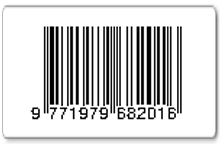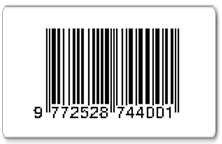Prospek Asuransi Mikro Dalam Mengembangkan Pembiayaan Mikro di Banten
Abstract
Tujuan dari penelitian ini adalah untuk mengkaji prospek asuransi mikro dalam mengembangkan pembiayaan mikro di Provinsi Banten. Dua permasalahan penelitian yang diajukan: pertama, bagaimana struktur organisasi lembaga keuangan yang tepat untuk memaksimalkan manfaat ekonomi asuransi mikro? Kedua, bagaimana manajemen keuangan dan manfaat ekonomi dari penggunaan asuransi mikro oleh lembaga keuangan? Untuk menjawab dua pertanyaan penelitian ini digunakan wawancara semi-terstruktur untuk menafsirkan data yang dikumpulkan dari lapangan. Metodologi studi kasus digunakan dalam penelitian ini, mengingat kompleksnya keuangan mikro dan asuransi mikro. Berdasarkan hasil penelitian maka dapat diambil kesimpulan sebagai berikut : 1. Penyaluran pembiayaan mikro masih menggunakan pola penyaluran langsung ke individu pengusaha dan belum menggunakan pola penyaluran berkelompok sehingga belum memperoleh manfaat ekonomi yang maksimal dalam penggunaan asuransi mikro. Ke depan diharapkan bank dapat mengembangkan pola penyaluran pembiayaannya dengan pola penyaluran pembiayaan berkelompok dan menerapkan jaminan sosial sehingga lebih baik dalam mengelola penyaluran pembiayaan mikro dengan resikonya yang tinggi. 2. Asuransi mikro telah berperan sebagai instrument untuk menjamin resiko dalam penyaluran pembiayaan mikro. Namun bank sebaiknya mendesain penyaluran pembiayaan mikro yang ideal dengan pola berkelompok yang dapat meminimalisir resiko yang timbul sehingga semakin banyak pengusaha mikro yang belum bankable yang dapat memperoleh akses pembiayaan dari bank. Pola pembiayaan berkelompok dapat meminimalisir biaya yang ditimbulkan oleh resiko yang disebabkan gagal bayar nasabah, sehingga dana yang sebelumnya dialokasi untuk mengcover resiko kredit dapat dialihkan untuk memberi manfaat asuransi yang lebih luas bagi nasabah.
Keywords
Full Text:
PDFReferences
Akotey, O.J., Osei, K.A. and Gemegah, A. (2011), “The demand for micro insurance in Ghana”, Journal of Risk Finance, Vol. 12 No. 3, pp. 182-194.
Arrow, J.K. (1963), “Uncertainty and the welfare economics of medical care”, American Economic Review, Vol. 53 No. 5, pp. 941-973.
Baiman, S. (1990), “Agency research in managerial accounting: a second look”, Accounting, Organizations and Society, Vol. 15 No. 4, pp. 341-371.
Bruton, G.D., Ahlstrom, D. and Puky, T. (2009), “Institutional differences and the development of entrepreneurial ventures: a comparison of the venture capital industries in Latin Americaand Asia”, Journal of International Business Studies, Vol. 40 No. 5, pp. 762-778.
Bruton, G.D., Khavul, S. and Chavez, H. (2011), “Micro lending in emerging economies: building a new line of inquiry from the ground up”, Journal of International Business Studies, Vol. 42 No. 5, pp. 718-739.
Chakarbarty, S. (2012), “Does micro-credit increase bonded child labour in the absence of microinsurance?” Microinsurance research paper no. 12, International LabourOrganisation, Microinsurance Innovation Facility.
Cheng, S.H. and Chiang, T.L. (1997), “The effect of universal health insurance on healthcareutilization in Taiwan: results from a national experiment”, Journal of American Medical Association, Vol. 278 No. 2, pp. 89-93.
Churchill, C. (2007), “Insuring the low-income market: challenges and solutions for commercial insurers”, Geneva Papers on Risk and Insurance: Issues and Practice, Vol. 32 No. 3,pp. 401-412.
Churchill, C., Phillips, R.D. and Reinhard, D. (2011), “Introduction to the 2011 symposium issue of JRI on Microinsurance”, Journal of Risk and Insurance, Vol. 78 No. 1, pp. 1-5.
Copestake, J., Bhalotra, S. and Johnson, S. (2001), “Assessing the Impact of microcredit: a Zambian case study”, Journal of Development Studies, Vol. 37 No. 4, pp. 81-100.
Criel, B., Stuyft, P. and Lerberghe, W. (1999), “The Bwamanda Hospital insurance scheme:effective for whom? A study of its impact on hospital utilization patterns”, Social Scienceand Medicine, Vol. 48 No. 7, pp. 897-911.
Dercon, S., Kirchberger, M., Gunning, J.W. and Platteau, J. (2008), “Literature review on microinsurance”, Microinsurance paper no. 1, International Labour Organisation:microinsurance innovation facility.
Doz, Y. (2011), “Qualitative research for international business”, Journal of International Business Studies, Vol. 42 No. 5, pp. 582-590.
Dror, D.M., Koren, R. and Steinberg, D.M. (2006), “The impact of filipino micro-health insurance units on income-related equality of access to healthcare”, Health Policy, Vol. 77 No. 3, pp. 304-317.
Easterly, W. (2009), “Can the West Save Africa?”, Journal of Economic Literature, Vol. 47 No. 2, pp. 373-344.
Easterly, W. and Levine, R. (1997), “Africa’s growth tragedy: policies and ethnic divisions”, Quarterly Journal of Economics, Vol. 112 No. 4, pp. 1203-1250.
Eisenhardt, K.M. (1989), “Building theories from case study research”, Academy of Management Review, Vol. 14 No. 4, pp. 532-550.
Eisenhardt, K.M. and Graebner, M.E. (2007), “Theory building from cases: opportunities and challenges”, Academy of Management Journal, Vol. 50 No. 1, pp. 25-32.
Ghatak, M. and Guinnane, T.W. (1999), “The economics of lending with joint liability: theory and practice”, Journal of Development Economics, Vol. 60 No. 1, pp. 195-228.
Giesbart, L., Steiner, S. and Bendig, M. (2011), “Participation in micro life insurance and the use of other financial services in Ghana”, Journal of Risk and Insurance, Vol. 78 No. 1, pp. 7-35.
Gine, X. and Yang, D. (2009), “Insurance, credit and technology adoption: field experimental evidence from Malawi”, Journal of Development Economics, Vol. 89 No. 1, pp. 1-11.
Gine, X., Townsend. R.Mand Vickery, J. (2007), “Statistical analysis of rainfall insurance payouts in Southern India”, American Journal of Agricultural Economics, Vol. 89 No. 1, pp. 1248-1254.
Hamid, S.A., Roberts, J. and Mosley, P. (2011), “Can micro health insurance reduce poverty? Evidence from Bangladesh”, Journal of Risk and Insurance, Vol. 78 No. 1, pp. 57-82.
Hintz (2010), “Social impact assessment of compulsory credit-life insurance”, in Morelli, E., Onnis,
G.A., Ammann, W.J. and Stutter, C. (Eds), Microinsurance: An Innovative tool for Risk and Disaster Management, Davos. International Monetary Fund (2010), International Financial Statistics, IMF, Washington, DC.
Islam, A. and Maitra, P. (2011), “Health shocks and consumption smoothing in rural households: does microcredit have a role to play?”, Journal of Development Economics, Vol. 79 No. 2, pp. 413-446.
Kader, H.A., Adams, M.B. and Hardwick, P. (2010), “The cost efficiency of takaful insurancecompanies”, Geneva Papers on Risk and Insurance: Issues and Practice, Vol. 35 No. 1, pp. 161-181.
Karlan, D. Kutsoati, E., McMillan, M. and Urdy, C. (2011), “Crop price indemnified loans for farmers: a pilot experiment in rural Ghana”, Journal of Risk and Insurance, Vol. 78 No. 1, pp. 37-55.
Lauz, C. and Muermann, A. (2010), “Financing risk transfer under governance problems: mutual versus stock insurers”, Journal of Financial Intermediation, Vol. 19 No. 3, pp. 308-322.
Leftley, R. and Mapfumo, S. (2006), Effective Microinsurance Programs to Reduce Vulnerability, Opportunity International Network, London.
Lewis, M. K. (2011) ―Evolution of Takaful Products‖in K. Hassan and M. Mahlknecht (Eds). Islamic Capital Markets, Products and Strategies.New York: John Wiley & Sons.
Loewe, M. (2006), “Downscaling, upgrading or linking? Ways to realize micro-insurance”, International Social Security Review, Vol. 59 No. 2, pp. 37-59.
McPherson, M. (1996), “Growth of micro and small enterprises in Southern Africa”, Journal of Development Economics, Vol. 48 No. 2, pp. 253-277.
Magnoni, B. and Zimmerman, E. (2011), “Do clients get value from microinsurance? A systematic review of recent and current research”, Microinsurance Learning and Knowledge: Microinsurance Centre.
Mayers, D. and Smith, C.W. (1981), “Contractual provisions, organizational structure and conflict control in insurance markets”, Journal of Business, Vol. 54 No. 3, pp. 407-434.
Mayers, D. and Smith, C.W. (1988), “Ownership structure across lines of property-casualty insurance”, Journal of Law and Economics, Vol. 31 No. 2, pp. 351-378.
Murdoch, J. (1999), “Between the state and the market: can informal insurance patch the safety net?”, World Bank Research Observer, Vol. 14 No. 2 pp. 187-207.
Murgai, R., Winters, P., Sadoulet and de Janvry, A. (2002), “Localized and incomplete mutual insurance”, Journal of Development Economics, Vol. 76 No. 2, pp. 245-274.
Messah OB, and Wangai. 2011. Factors that influence The Demand for Credit Among Small-Scale Investor: a Case Study of Meru Central Distric, Kenya. Research Journal of Finance and Accounting, 2(2). www.iiste.org.
Organization for Economic Cooperation and Development (2009), Direct Investment Database,OECD, Paris.
Paal, B. and Wiseman, T. (2011), “Group insurance and lending with endogenous social collateral”,Journal of Development Economics, Vol. 94 No. 1, pp. 30-40.
Patton, M.Q. (1990), Qualitative Evaluation and Research Methods, Sage Publications, New York, NY.
Platteau, J.P. (1997), “Mutual insurance as an elusive concept in traditional rural communities”, Journal of Development Studies, Vol. 33 No. 6, pp. 764-796.
Roth, J., McCord, M.J. and Liber, D. (2007), The Landscape of Microinsurance in the World’s 100 Poorest Countries, Microinsurance Centre, Appleton, WI.
Rothschild, M.J. and Stiglitz, J. (1976), “Equilibrium in competitive insurance markets: an essay on the economics of imperfect information”, Quarterly Journal of Economics, Vol. 90 No. 4, pp. 629-649.
Smith, B.D. and Stutzer, M.J. (1990), “Adverse selection, aggregate uncertainty, and the role of mutual insurance contracts”, Journal of Business, Vol. 63 No. 4, pp. 493-510.
Smith, B.D. and Stutzer, M.J. (1995), “A theory of mutual formation and moral hazard with evidence from the history of the insurance industry”, Review of Financial Studies, Vol. 8 No. 4, pp. 545-577.
Swiss Re (2010), Microinsurance–Risk Protection for 4 Billion People, No. 6, Sigma, Swiss Re, Zurich.
Townsend, R. (1994), “Risk and insurance in village India”, Econometrica, Vol. 62 No. 3, pp. 539-592.
Udry, C. (1994), “Risk and insurance in a rural credit market: an empirical investigation in Northern Nigeria”, Review of Economic Studies, Vol. 61 No. 3, pp. 495-526.
Wanyama, S., Burton, B. and Helliar, C. (2009), “Frameworks underpinning corporate governance: evidence on ugandan perspectives”, Corporate Governance: An International Review, Vol. 17 No. 2, pp. 159-175.
Welch, C., Piekkari, R., Plakoyiannaki, E. and Paavilainen-Mäntymäki, E. (2011), “Theorising from case studies: towards a pluralist future for international business research”, Journal of International Business Studies, Vol. 42 No. 5, pp. 740-762.
World Bank (2010), African Development Indicators, World Bank, Washington, DC. Wright, K. and Copestake, J. (2004), “Impact assessment of microfinance using qualitative data: communicating between social scientists and practitioners using the QUIP”, Journal of International Development, Vol. 16 No. 3, pp. 355-367.
Yin, R. (2004), Case Study Research: Design and Methods, Sage Publications, Thousand Oaks, CA.
DOI: http://dx.doi.org/10.35448/jrat.v13i2.9067
Refbacks
- There are currently no refbacks.
pISSN 1979-682X eISSN 2528-7443
Jurnal Riset Akuntasi Terpadu (JRAT) is licensed under a Creative Commons Attribution 4.0 International License







